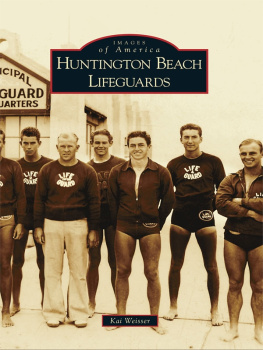CHAPTER I. THE BANDIT SPIES.
In the latter part of August, 1876, a mysterious company of men made their appearance in southern Minnesota, and proceeded to visit various cities and villages in that part of the state. There were certainly eight of them, and possibly nine, some of them hard, vicious-looking fellows, from whom people instinctively shrank, others gentlemanly, handsome, and even imposing in personal appearance. They travelled on horseback and rode like men accustomed to live in the saddle. They had the finest of horses and equipment, part of it brought with them, the rest purchased after they entered the state. They had plenty of money and spent it lavishly. In their progress from place to place they did not go like [pg 2] an organized band, but wandered here and there, sometimes two by two, sometimes four or five together. When several of them visited a town together, they went to different hotels and avoided all appearance of collusion or of common design. Often they avoided towns and sought entertainment at the houses of farmers or other citizens, where they found no difficulty in making themselves agreeable and in giving a plausible account of themselves. Wherever they went, they attracted more or less attention, excited the curiosity of the inquisitive, and occasionally the suspicions of the wary; but upon most people they made the impression of well-bred respectability. They passed for civil engineers looking up railway routes, for capitalists in search of land, for stockmen dealing in horses and cattle. Their outfit and mode of travel made either of these suppositions reasonable, and their smooth courtesy, affability and apparent frankness were accepted in lieu of credentials of character. That they were not all that they pretended to be many people suspected; but that they were a band of outlaws, or rather a combination of three bands, comprising the most notorious desperadoes in the country, laying their plans for a great robbery, no one suspected. Still less did [pg 3] they themselves suspect that their career of crime was so near its close, or that they were making deliberate plans for their own destruction.
Of course they passed under assumed names, introducing themselves as J. C. King, Jack Ward, etc. It is now known that the band consisted of the following men: Jesse James and his brother Frank, Thomas C. Younger (commonly known as Cole Younger) and his brothers James and Robert, Clel Miller, William Stiles, alias Chadwell, and Charles Pitts, alias Geo. Wells. Some persons maintain that there was a ninth man, but he has never been identified, and is commonly believed to be mythical. The eight whose names are given were all men of criminal antecedents, and some of them with a record for deeds of the most revolting atrocity; though several of them were connected with highly respectable families.
In prospecting for a favorable opening, they visited a number of places, going as far north as St. Paul and Minneapolis, and as far east as Red Wing. In each place they made a careful study of the chances for successful operations in their line and of routes of escape, visiting the banks on one pretext or another, and familiarizing themselves with all facts that had any bearing on their scheme. They took special pains to make [pg 4] themselves acquainted with such features of the country as would aid or hinder them in going and coming on their intended raid; as, for instance, the location of lakes, streams, swamps or forests, on the one hand, and that of roads, bridges and fords, on the other. The situation and the resources of villages, the extent of country population, and the nationality and character of the people also interested them. With the aid of maps, printed statements and minute inquiries, they succeeded in gaining a large amount of information, without betraying their purpose,information which they found exceedingly convenient at a later day. They also had the advantage of being to a certain extent personally conducted. Stiles, one of their number, had formerly lived in Rice county, and was therefore able to act as a sort of guide for the expedition, if, indeed, he was not, as some think, its instigator. Their reliance upon him, however, proved in the end, as we shall see, a source of danger rather than of safety.
Finding nothing to their mind in the great cities, they turned their attention to a group of country towns lying farther south, including St. Peter, Mankato, Lake Crystal, Madelia, St. James, Garden City, Janesville, Cordova, [pg 5] Waterville, Millersburg, Cannon City and Northfield. These, again, divide themselves into two smaller groups, having direct or indirect relation to the two points of attack selected by the robbers, and all of them being on or near a diagonal line, extending about thirty or forty miles southwest and about forty or fifty miles northeast of Mankato.
Having completed their preliminary survey, they prepared for their grand exploit. Their first project was the robbery of one or more of the banks of Mankato, a thriving town at the great bend of the Minnesota River. Five of the band appeared in Mankato on Saturday, September 2nd, and, as usual, created a sensation with their fine horses and horsemanship. They made purchases at some of the stores, and paid a visit to the First National Bank, where they got change for a fifty dollar bill. According to their custom, they stayed at different hotels, at least four of them did, while the fifth sought some other resort not identified. On Sunday night two of them were known to be at a notorious resort on the opposite side of the river, a rendezvous of the lowest criminals, where, as is believed, they were in consultation with confederates with reference to their intended raid and subsequent escape. [pg 6] Meantime, Jesse James had been recognized by a man who knew him by sight, and the fact was reported to the police who shadowed the men until midnight, and put some of the bank people on their guard against possible burglaries; though no one anticipated an open attack by daylight.
On Monday, the 4th, the robbers mounted their horses and rode forth to their intended attack. Their plan was to make it about noon, when the bank force would be reduced and the streets would be most free of citizens. They had already arrived opposite the First National Bank, when they noticed a number of citizens on the sidewalk, and saw one of them apparently calling another's attention to the approaching horsemen. The robbers, fearing that they were suspected and watched, deferred the attack till a later hour. On returning, however, they saw the same citizens again, seeming, as before, to be keeping close watch upon the strangers. Convinced now that their purpose was discovered and that the citizens were prepared for them, the robbers abandoned their project and left Mankato as speedily as possible. The truth was that they were at that moment the object of no suspicion whatever. The regular weekly meeting of the Board of [pg 7] Trade, and some repairs on an adjoining building, had called together the unusual number of persons whom the robbers observed, and the man who was supposed to be directing his companion's attention to the bandits was simply remarking upon the fine quality of their horses. No doubt, however, the presence of so large a number of spectators would have seriously embarrassed the gang in beginning operations. As it was, they sensed just as good a purpose in repelling the attack as if they had been a company of armed militia on duty.










